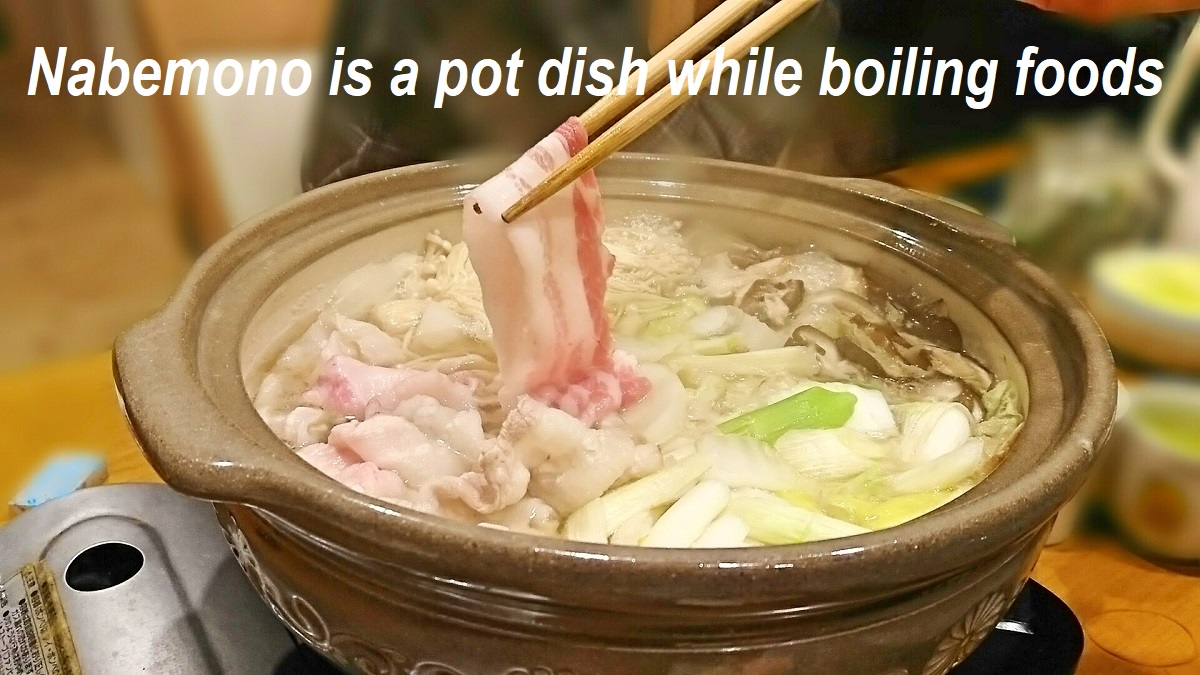Nabemono
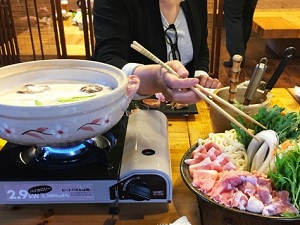
"Nabe" means "cooking pot" and "mono" means "kinds".
A portable stove is set on the center of a table and a pot is put on it.
A few members of family or friends sit around the pot.
Various ingredients and soup are put into the pot, then a member sets fire to the stove.
The foods are gradually boiled, then become edible.
Each of the member picks some favorite foods from the pot to each plate, and eats them.
Eating foods from a shared pot together is an important feature of nabemono.
We believe that nabemono makes for closer relationships of the members.
Very hot foods are eaten around the heated pot, so most nabemono dishes are usually served in the cold season.
In ryokan or minshuku, the meals are served individually.
A small pot and a stove are set on each individual table.
Various Nabemono
Yosenabe
Yosenabe is most popular nabemono, and it means "one-pot dish cooked various ingredients together".
We often call it as "Nabe" shortly.
Generally an earthen pot is used for Yosenabe.
Tofu, a few kinds of seafoods or meats, some kinds of vegetables and mashrooms are cooked together in the pot.
Hakusai (Chinese cabbage), shungiku (edible chrysanthemum), negi (green onion) etc., Japanese vegetables are mainly used.
In advance, water and a piece of dried konbu for dashi are put in the pot.
You eat picked ingredients from the pot after dipping in the sauce based on shoyu.
Also it is common that the ingredients are stewed in the seasoned soup with shoyu or miso.
After all ingredients are eaten up, very tasty soup is left in the pot.
We often put boiled rice into this soup and make "Zosui" like risotto with boiling them.
We also feel happy when we eat zosui after we have enjoyed the Yosenabe.
Instead of Zosui, Udon noodle or Chinese noodle is also tasty.
By the way, Sumo wrestlers often make Nabemono as their meal.
They use a big metal pot called "Chanko-nabe", so the dish is called Chanko.
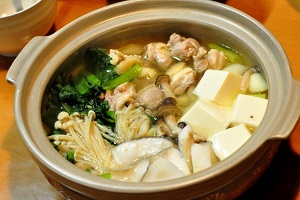
Yosenabe

Chanko
Sukiyaki
Sukiyaki is one of most famous Japanese dishes well-known in the world.
When making sukiyaki, a shallow iron pot is used.
Generally, it is made by stewing thinly-sliced beef, yakidofu, shirataki, green onion, shiitake mashroom etc. in the soup of dashi, shoyu and sugar.
The ingredients are usually dipped in a small bowl of raw, beaten eggs, when we eat the ingredients.
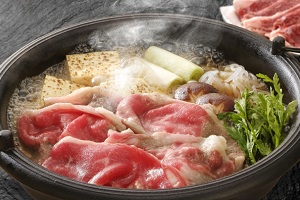
Sukiyaki
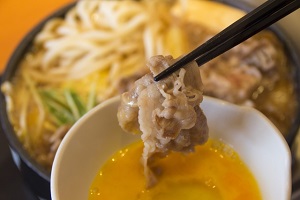
Dipping sukiyaki into raw egg
Shabu-shabu
Shabu-shabu is the dish that the diner soaks a thinly-sliced meat in boiling water in a pot with chopsticks for a moment and eats after dipping in favorite sauces.
The sauces are usually used "ponzu" (mixed juice of Japanese citrus fruits to shoyu and mirin), or "goma-dare" (mixed sesami paste to shoyu and mirin).
As the ingredients, vegetables and tofu are preparated in addition to meat.
Beef or pork is used as the popular ingredient, but we can find the restaurants which serve the shabu-shabu of crab, chicken or lamb.
Recently, fish and seaweed are also used for shabu-shabu.
Yudofu
Yudofu means "tofu in boiled water", and is the dish that only tofu is boiled in a pot in which water and dried konbu for dashi are put.
We eat picked boiled tofu with dipping in the sauce based on shoyu.
Many restaurants of yudofu are found in Kyoto.
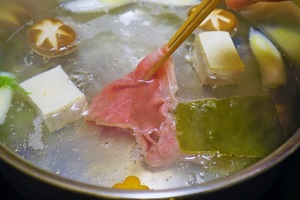
Shabu-shabu
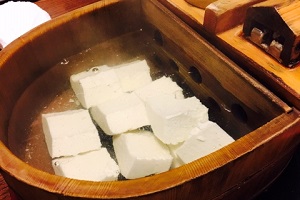
Yudofu in Kyoto

